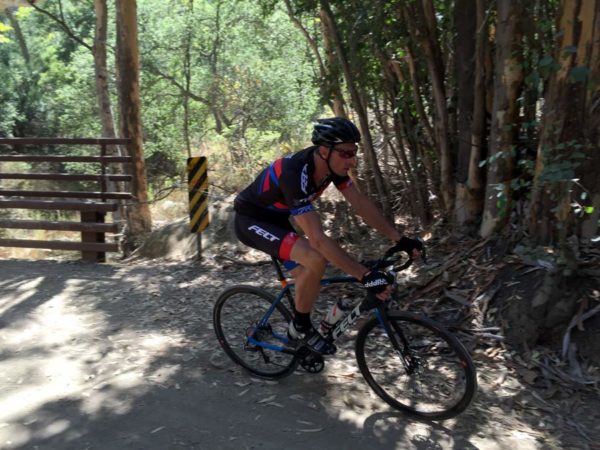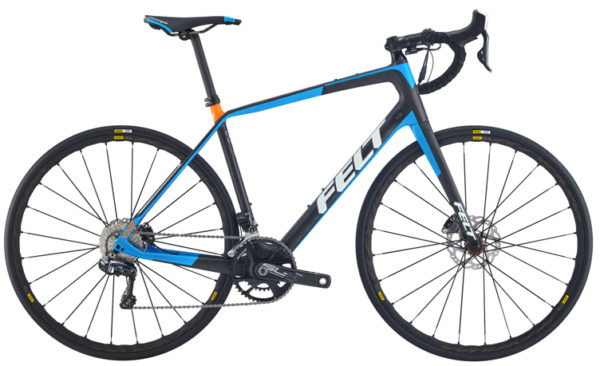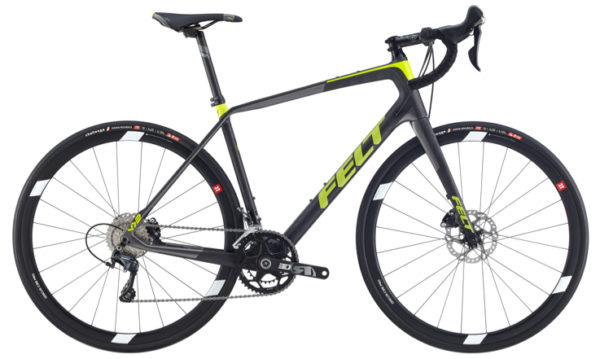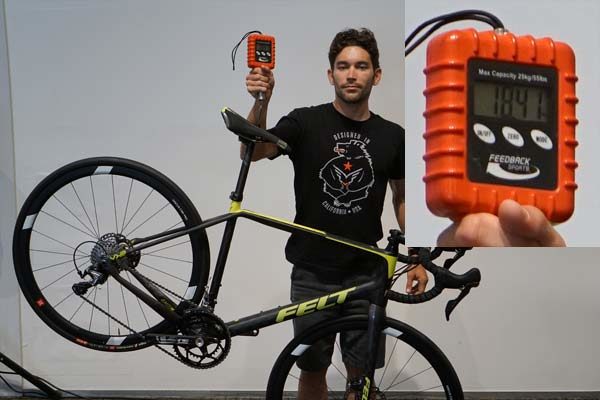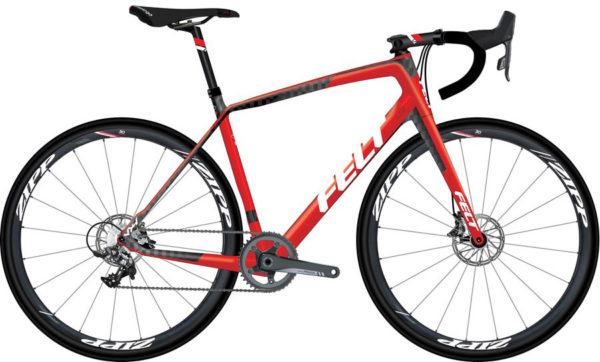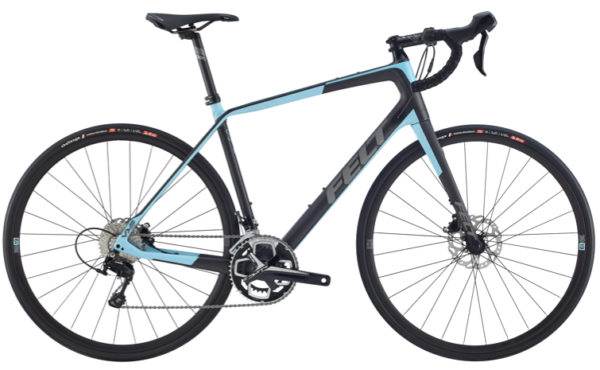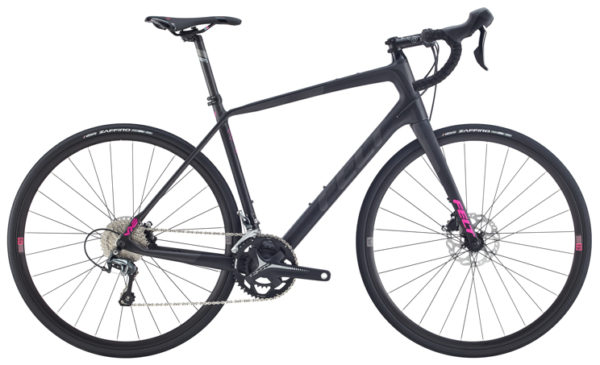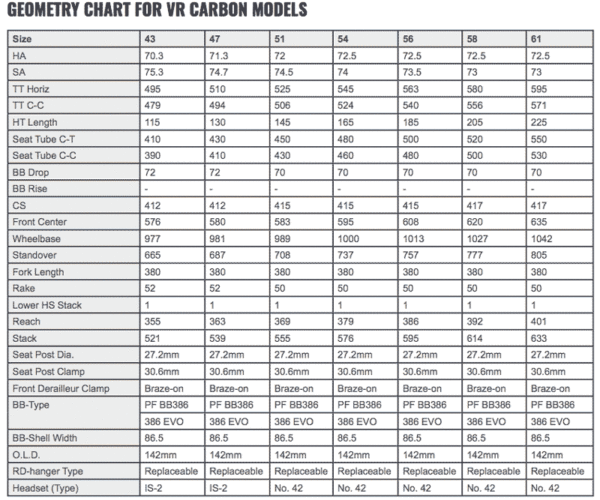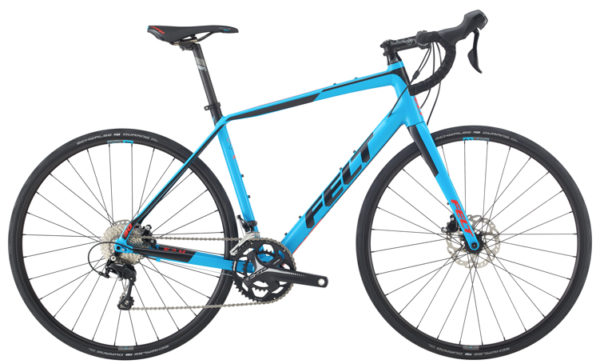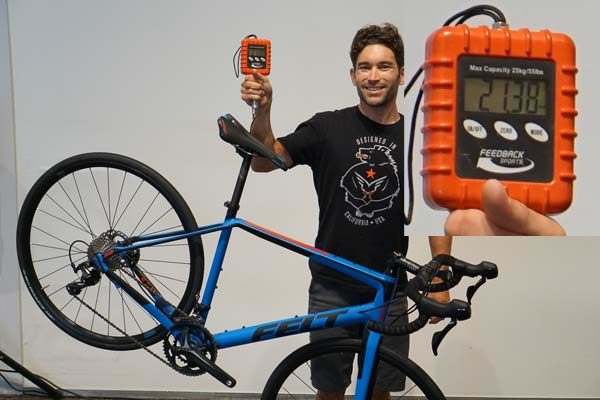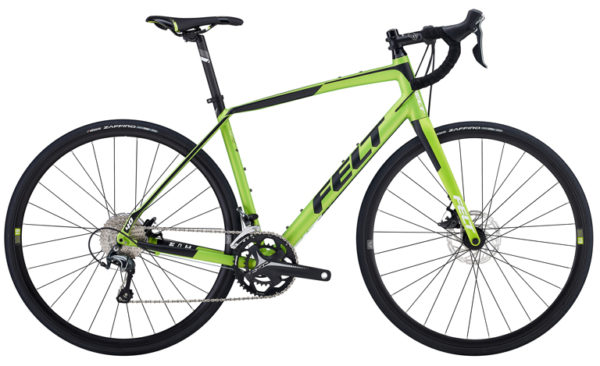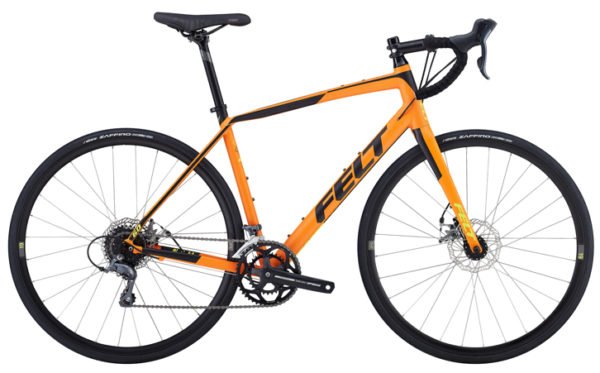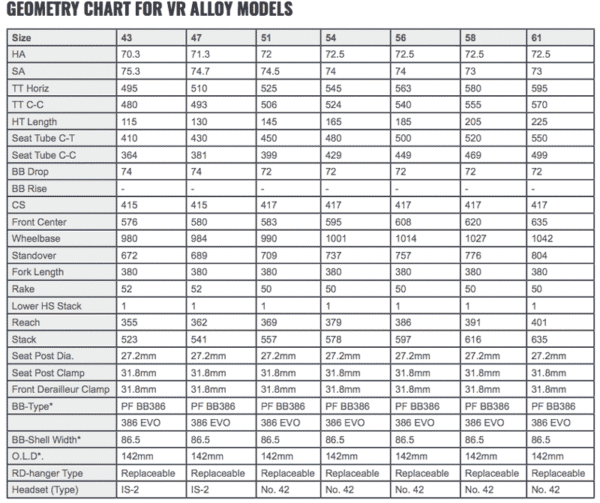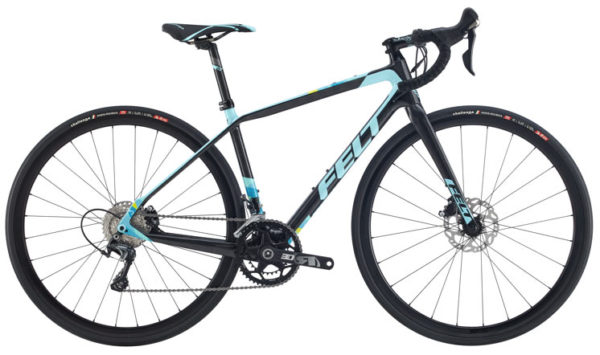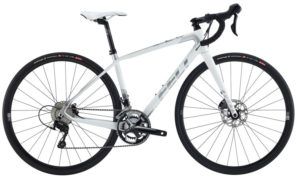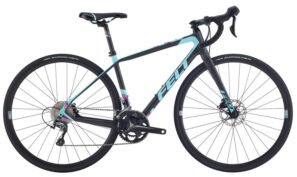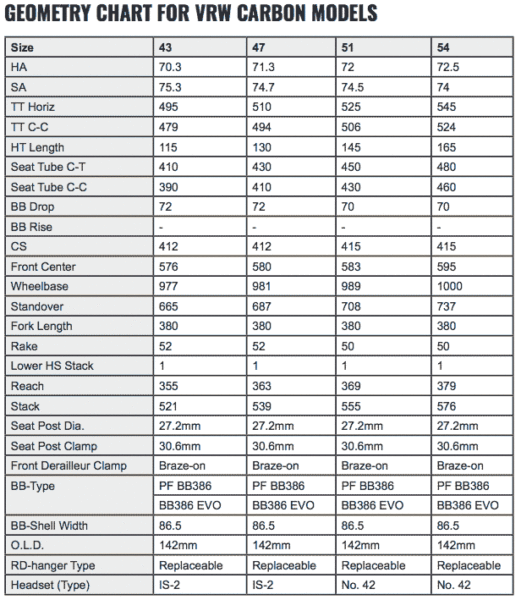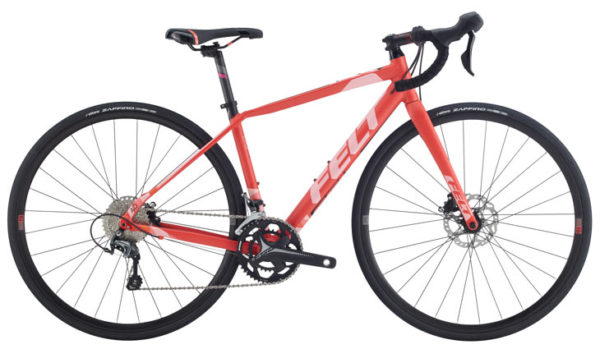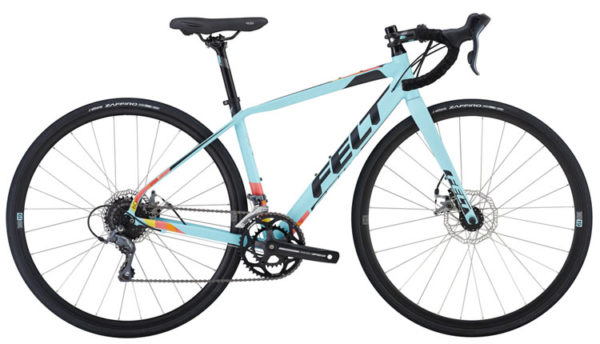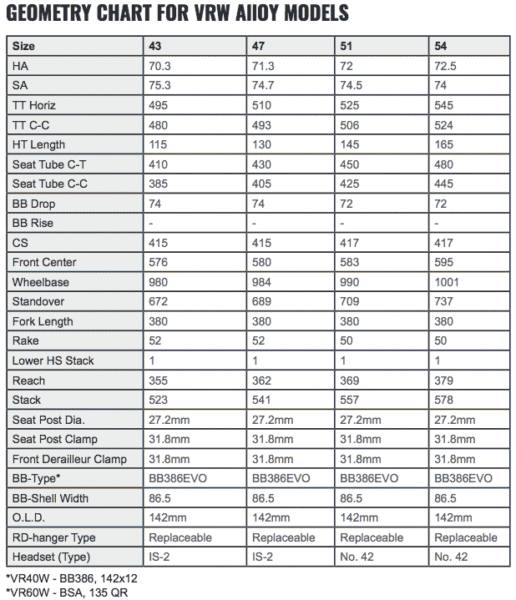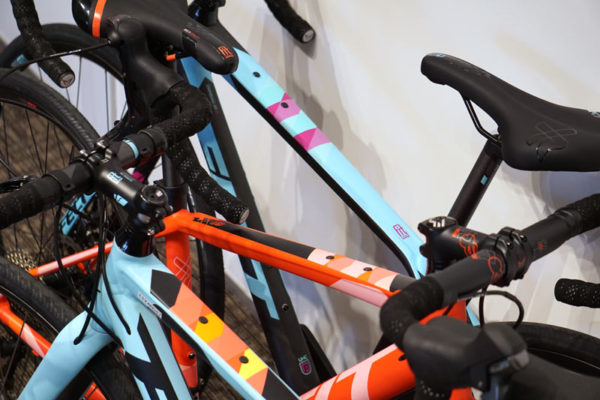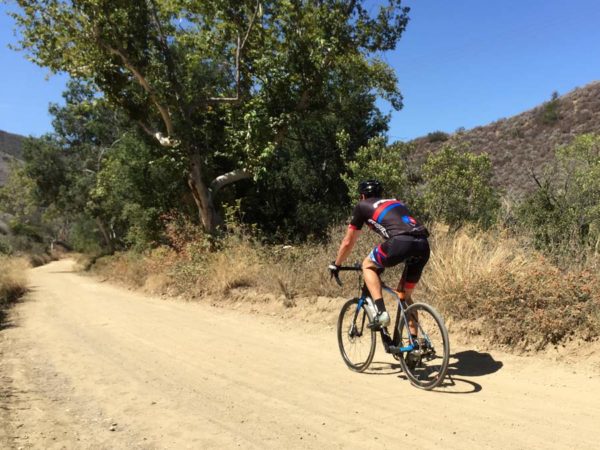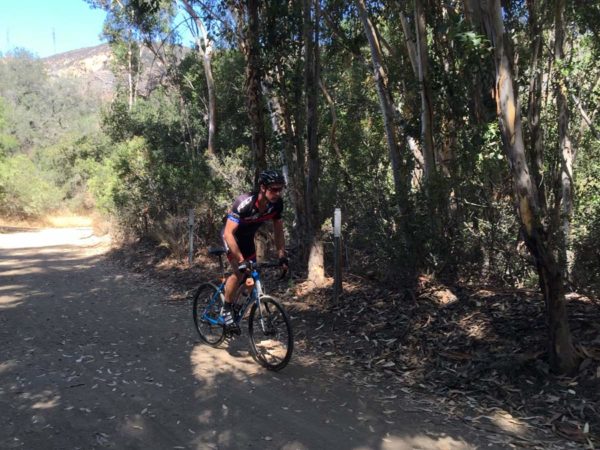Alongside the new FR road/race bike, the 2017 Felt VR endurance road bike was announced. While they’re saying it’s not technically a gravel bike (hinting more to come, maybe…possibly), we did extend our demo ride up Black Star Canyon outside Irvine, CA. Indeed, it does skew much farther toward the “road” side of things than cyclocross, but it made its way through the sandy mixed surface road just fine. More on the handling and ride at the bottom – first, the specs and weights…
The VR2 is the top model with UHC Advanced + TeXtreme carbon frame and fork and gets Ultegra Di2 with R785 hydraulic brakes and levers and Mavic’s Ksyrium Elite Allroad wheels with 700×28 Mavic tires. The crank is FSA’s SL-K with their Modular Adventure chainring set using a 46/30 combo. This chasm of a difference in chainring sizes is intentional, providing you with really easy, 1:1 or greater ratios when you’re grinding up a hill. Look for it on all the bikes. For the full tech explanation on this and the rest of the VR series, check our launch story. The VR2 will retail for $5,499 and has a claimed weight of 17.9lb (8.12kg). This one’s not available until October. Unless otherwise noted, all other carbon bikes will be available in September, and the alloy ones in August. Common elements across the entire range include 3T and/or housebrand cockpits and Prologo saddles.
The VR3 steps down to Ultegra mechanical with a Rotor 3D30 crankset, 3T Discus C35 wheels and Challenge Paris-Roubaix 700×27 tires. $3,699, 18.5lb (8.39kg) claimed.
The VR3 hit our scales at 18.41lb (8.35kg). All bikes weighed are with tubes and size 56.
The VR4 loses the TeXtreme fibers, but gets the only 1x drivetrain, spec’ing SRAM Rival 1 with hydraulic disc brakes, Zipp 30 Course tubeless ready alloy wheels, Schwalbe S-One tires and Token BB. $2,999, weight TBD.
VR5 drops down to UHC Performance carbon fibers in the frame but keeps the UHC Advanced carbon fork. It gets Shimano 105 with RS505 hydro brakes, Felt tubeless-ready alloy wheels and cockpit and Challenge Paris-Roubaix tires. $2,499, 19.6lb (8.92kg).
VR6 comes with FSA Omega cranks, Shimano Tiagra 2×10, RS405 hydraulic brakes with 160mm front and 140mm rear rotors. $2,199, 20.17lb (9.15kg). Available October.
Our scale showed 20.35lb for the VR6.
The alloy VR bikes kick off with the VR30, spec’d with Shimano 105 and RS505 brakes, FSA Omega cranks, Felt’s tubeless ready alloy wheels and Vittoria Zaffiro 700×28 tires. It comes with the same UHC Advanced full carbon fork as some of the carbon bikes. $1,699, 21.25lb (9.64kg).
It hit 21.38lb on our scale.
The VR40 comes with FSA Vero Pro cranks, a 48/32 chainring combo and wider range 11-34 mountain bike cassette, Shimano Tiagra 2×10 and Rever’s mechanical disc brake calipers. $1,299, 21.82lb (9.9kg).
The VR60 keeps the custom butted 6061 alloy frame, but dips down to a standard BSA threaded bottom bracket shell and alloy steerer on the fork (legs are still carbon). It sports an FSA Tempo crankset with Shimano Claris 8-speed with 11-32 MTB cassette, Promax calipers and Vittoria tires. $899, 22.65lb (10.27kg). Also available in matte silver.
The women’s bikes carry over the same spec, but, quite honestly, get better graphics and color blends. They also come in smaller sizes, but generally share the same size specific construction and stack/reach progression as the men’s/unisex bikes.
The VR3W is the top model ($3,699), followed by the VR5W (below, left, $2,499) and VR6W (right, $2,199) for carbon.
The alloy bikes include the VR40W (above, $1,299) and VR60W (below, $899, available September).
Nice graphics.
FIRST IMPRESSIONS
We rode the VR2 for almost three hours, of which ~40 minutes was on dirt roads heading up to and down from Black Star Canyon Falls. After performing my usual “emergency stops” and slalom tests on the pavement, I started intentionally aiming the bike off the road onto mail box pullouts and gravel shoulders to test the bike’s ability to transition between surfaces. It’s not claiming to be a gravel bike, I know, but worst case scenarios, right? Other than bubbling through one particularly deep pool of pebbles that sent my heart into my throat, the VR was perfectly predictable going from road to not road and back.
The two things I’d change immediately on this bike would be upgrading to a carbon handlebar and setting the tires up tubeless. We rode the bike with the Mavic Allroad wheels but incorrect tire spec. The tires were good, but the wide rubber and addition of a tube made acceleration feel more sluggish than the frame warranted. And the tires were inflated quite high, something of a safeguard I presume, but combined with the alloy handlebar resulted in me (and a lot of others, I noticed) shaking out their hands frequently. My desired changes typically improve that immediately, and they’d likely decrease rotational weight and help the bike feel snappier.
Those quibbles aside, the VR2 was impressive for its stability. In fact, I’d call it the most stable bike I’ve ridden in recent memory. Transitioning from the tops to the drops at 30+ mph is easy and confident, as is checking for traffic over your shoulder with just one hand on the bars. I can’t say that for many road bikes, where I’m much more cautious about keeping one hand firmly on the top of the bar while bringing the other one down to the drops to keep the bike from getting loose.
Stand up to hammer and the bike remains sturdy underneath, and no matter how much power I tried to put on the pedals, the bottom bracket section simply didn’t flex. Spec is good, particularly the “adventure” compact chainring pairing. For an endurance bike, it hits all the right marks.
